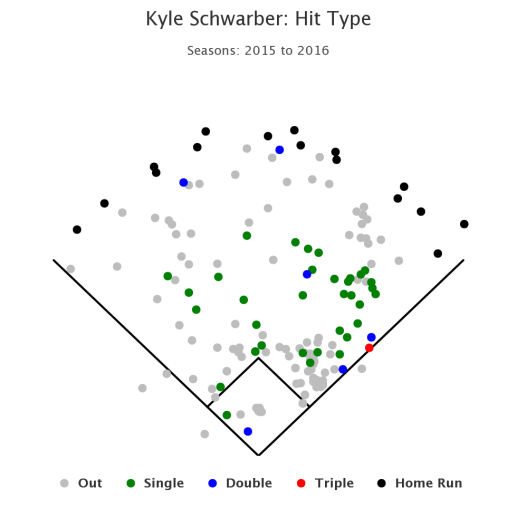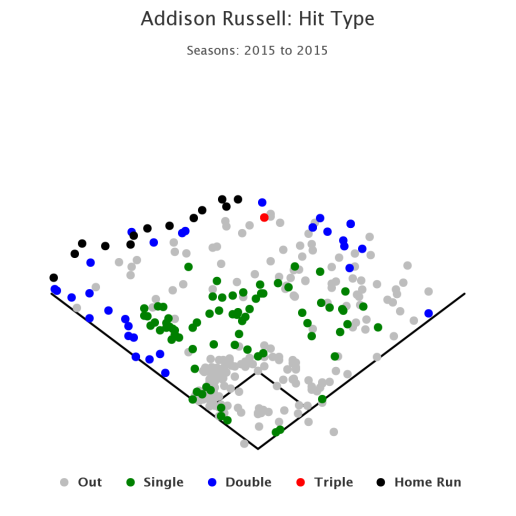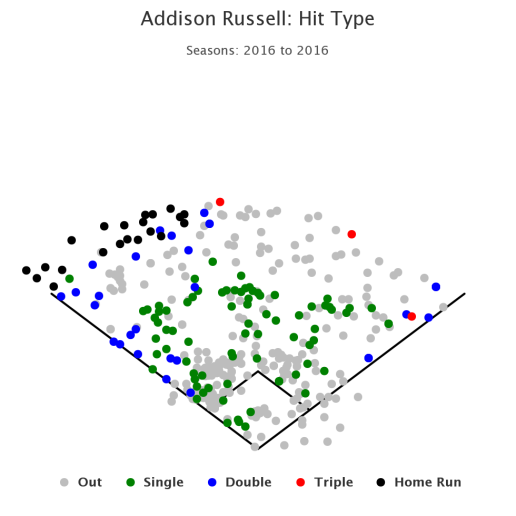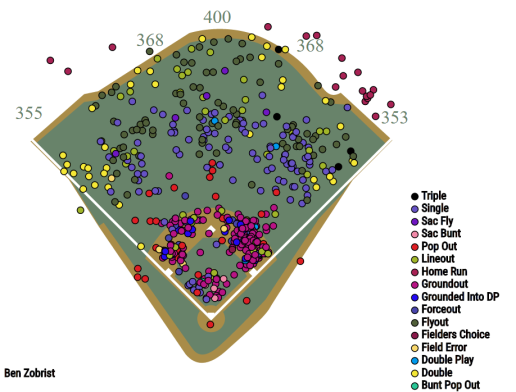
When it became clear that Dexter Fowler’s career year and impending free agency meant that it was highly unlikely that the offensive catalyst of 2016’s historic run would return, the Cubs brass had two options – stand pat and put Albert Almora in position to be their everyday center fielder and Opening Day starter before he turned 23, or add a veteran to replicate an outfield platoon similar to the one that will be employed in left field this season, albeit smaller.
Signing Jon Jay for $8 million acted as a stopgap, anticipating that Fowler would indeed eventually cash in and sign elsewhere for a price the Cubs weren’t willing to pay. It’s worth questioning, as this FanGraphs piece does, what exactly Jay brings to the table, when there remains a significant production gap in Fowler’s absence, considering the former Cubs leadoff man had the third highest WAR total on the team behind only Kris Bryant and Anthony Rizzo.
A career .287 hitter in seven seasons, Jay had a line of .291/.331/.389 with the San Diego Padres last year. He is a tick above replacement level offensively with a 0.5 fWAR mark. Collectively, the numbers don’t inspire much confidence in this position group at the plate, collectively managing just 1.1 fWAR between Jay, Almora, Jason Heyward, and Jacob Hanneman, whom Fangraphs included in their projected depth chart. To Jay’s credit, he did post an oRAR (offensive runs above replacement) of 17, which puts him in the neighborhood of Max Kepler and C.J. Cron. Being a left-handed bat certainly doesn’t hurt, as it gives manager Joe Maddon the opportunity to play the matchups as often as possible.
But just as Fowler is almost certain to regress to the mean in 2017, Heyward’s dismal 2016 leaves plenty of room for upward mobility, which would take a lot of pressure not only off of major run producers like Bryant, Rizzo, and Schwarber, but also lessen the load on Jay or Almora.
The Cubs haven’t seemed very interested in playing Heyward in center, and it will likely remain that way unless injuries make that necessary. Pittsburgh moved Andrew McCutchen from center to right to accommodate a better outfielder in Starling Marte this offseason, and now with Jay to split time with and/or spot start for Almora as he matures, there’s really not much of a case for shifting Heyward away from right field.
****
How much Almora will play remains to be seen, but the biggest question with him is what kind of impact he’ll have this year. Forecasts from ZiPS and Steamer have Almora at .269/.298/.396 and .270/.300./.398, which is respectable for a guy with less than 50 big league games under his belt. His plate discipline may give the Cubs headaches initially, but this is just a part of the growing pains of developing young prospects. Much was made about Fowler playing deeper last season and his improved playing the outfield, but the thought that should reassure Cubs fans this season is the notion that Almora’s ceiling as an outfielder is already much higher than Fowler’s ever was.












You must be logged in to post a comment.